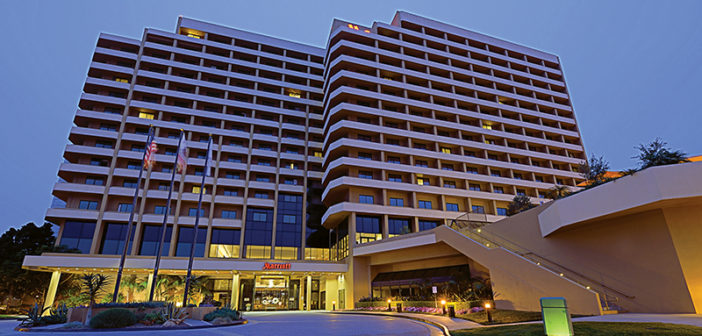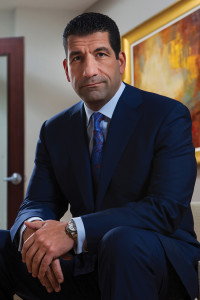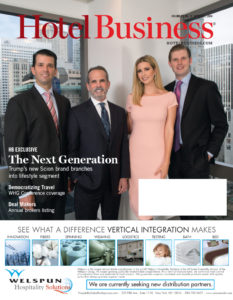NEW YORK—While industry chatter has pegged lodging real estate investment trusts as less aggressive than in the past in their acquisition pursuits, Carey Watermark Investors 2, Inc. (CWI 2) has been seeing distinct momentum, investing $472 million of equity into close to $1 billion in assets or approximately $1 million of CWI 2 total capitalization, without partner interest over the past 16 months (ended Aug. 30).
“In total, we have invested about a billion dollars in hotels, with nine properties to date,” said Michael Medzigian, CEO.
Last year saw the acquisition of the Marriott Sawgrass and The Ritz-Carlton Key Biscayne, both in Florida and both joint ventures, with CWI 2 acquiring 50% and 19.3%, respectively, in the deals.
Also acquired were the 192-room Courtyard by Marriott Downtown, Nashville, TN, for $60 million and the 403-suite Embassy Suites Denver, for $170 million.
Keeping ahead of that pace, this year the REIT thus far has acquired five properties. These include the 384-room Bellevue Marriott in Washington State ($179 million); 154-key Le Méridien Arlington, VA ($56.5 million); the 510-room San Jose Marriott ($154 million) and 372-room La Jolla Marriott ($137 million), both in California; and the 304-key Atlanta Renaissance Midtown in Georgia, another joint venture whose deal specifics were not available pending SEC filings by CWI 2.
“We’ve been an active buyer,” acknowledged Medzigian.
Medzigian characterized the California Marriott deals, done within 10 days of each other, as both strategic and opportunistic.
“Our investment program is a strategic program. We are focused on diversification,” he noted. “We do like some of the growth we’re seeing on the West Coast, some of the demand drivers, so we did have a focus of being on the West Coast. We are, at the same time, an opportunistic investor.”
The La Jolla Marriott was appealing, for example, because it was acquired on an off-market basis, said Medzigian, noting that’s one aspect that runs through “many of our investments.”
The property also was renovated recently and is a market-leading asset, according to the CEO. “It has a lot of the hallmarks of what we like to see. Whether it’s location, brand or building quality, we like to look for things in our investments that make them one of—if not the best—asset in their market. We think this one has those kinds of hallmarks.
“What we very much like about that market is there’s been no new full-service supply since 2002,” he continued. “There’re not a lot of markets you can look to in the country where you can say that, so there’s very high barriers to entry. We also bought the property at a very attractive cap rate.”
Similar attributes were attached to the San Jose Marriott: a recently renovated, off-market acquisition in a high-barrier-to-entry market and the largest city in Silicon Valley.
“The fact that we made two investments that look so similar, I don’t think you can really read anything into that. Portfolios grow. Our portfolio today looks very different than it did one year ago. It is interesting that we’ve got two investments that in many ways are so similar; we made one right behind the other. Now, Silicon Valley is a very different market than San Jose but they’re both Marriott-branded, both large institutional-quality assets. We see what’s going on in Silicon Valley. Obviously, it’s got different drivers that you’re going to find anywhere in the country, but it is one of the top U.S. RevPAR-growth markets and there, again, you’ve got very high barriers to entry. If you look around Silicon Valley, making a map of the high-quality hotel assets, there aren’t many,” observed Medzigian. “This is certainly one of the leading ones. It’s connected to the convention center, so excellent location. Here again, recently renovated by our seller, able to do it on an off-market basis at what we thought was an attractive cap rate.”
Medzigian noted between 2011 and 2015 the San Jose market did 15.6% compound annual RevPAR growth rate year-over-year, “far above the national average. The last numbers I saw, 2016 for the market was projected to grow at 10.1%; 2017 projected to grow at 9.6%. Those are [CBRE] numbers, significantly above the national average.
“There’s a lot of detail behind that. If you look at what’s going on in San Jose, and the volume of new office construction, the companies that are moving into the neighborhood, like Apple, it’s an asset that has us excited,” said Medzigian.
Bellevue, WA, is another robust market where CWI 2 has invested, again in a full-service Marriott.
“The growth drivers are fantastic,” noted Medzigian. “It’s a brand-new hotel that opened in July 2015. I went up and toured the property before it opened and my opinion is it’s about as well-built a hotel as I’ve ever seen, right down to the detail and thought that was given to how the meeting space lays out, how you move customers from a meeting to lunch then back to a breakout room; really efficient operations. So, not only did we like what we saw going on in the Bellevue market, but we liked what we saw being built at that hotel…and the hotel has performed very well since we acquired it.”
Getting a hotel into either a high-barrier-to-entry market or one that’s just emerging takes a certain amount of tenacity as well as vision, with greater expansion always a consideration.
“In any one of the markets we invest in, I would say we’re a candidate for additional investments. If you look at what we’ve done in the past, CWI 1 owns an asset in Nashville, as does CWI 2. We bought a second asset there. In Austin, TX, CWI 1 owns two hotels. In Denver, CWI 1 owns one and CWI 2 owns one. So, certainly not, not something we would consider,” said Medzigian.
With strong investment into Marriott product, the executive was asked his outlook on the Marriott-Starwood Hotels and Resorts International merger.
“I’m personally a big supporter of the merger and I think it’s going to be beneficial to the industry from a macro perspective. As to our portfolio, I suspect, just like any owner, you look out for your best self-interest and you look at how a merger or bringing together of brands might, in fact, impact our specific assets. So, on a macro basis, from a cost perspective, from a guest-loyalty perspective, I think the merger will prove to be a good thing. From a micro perspective, when we go through and do an analysis of our assets, we think we will be a beneficiary. We’ve done that analysis, we’ve looked at each one of our hotels and we see potential upside associated with what’s happening.” HB



